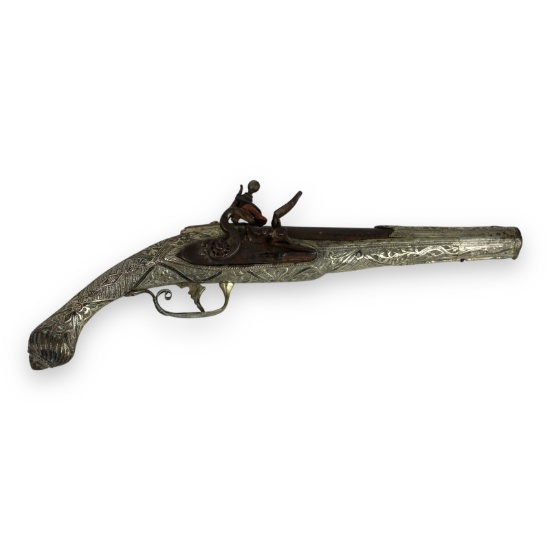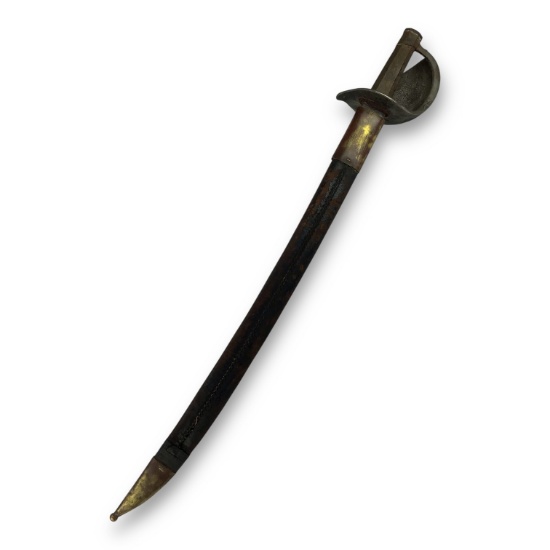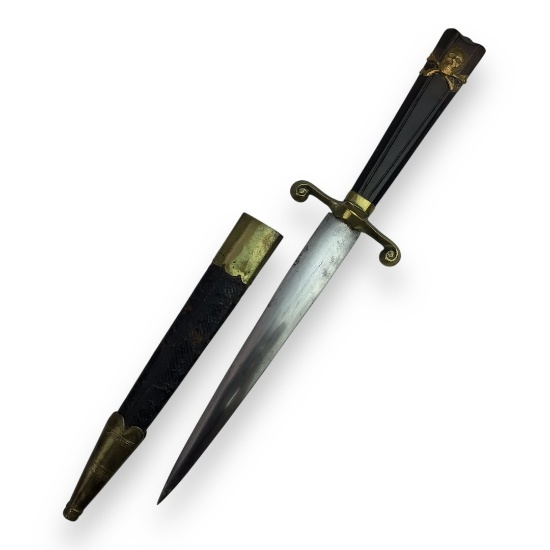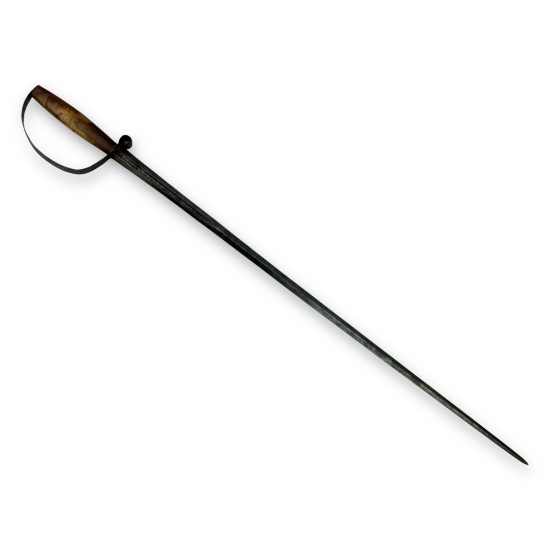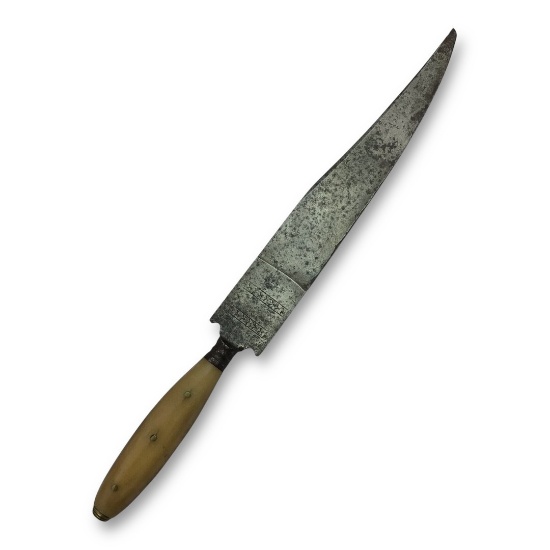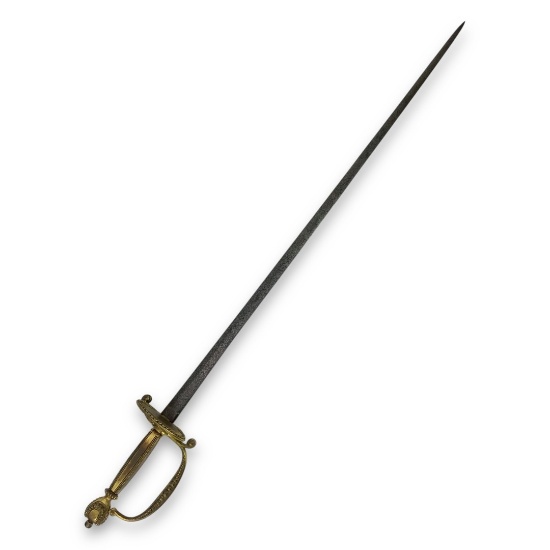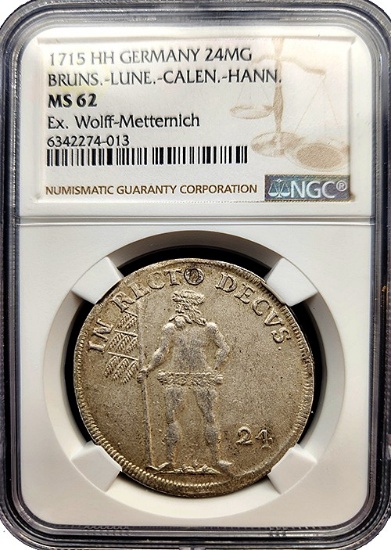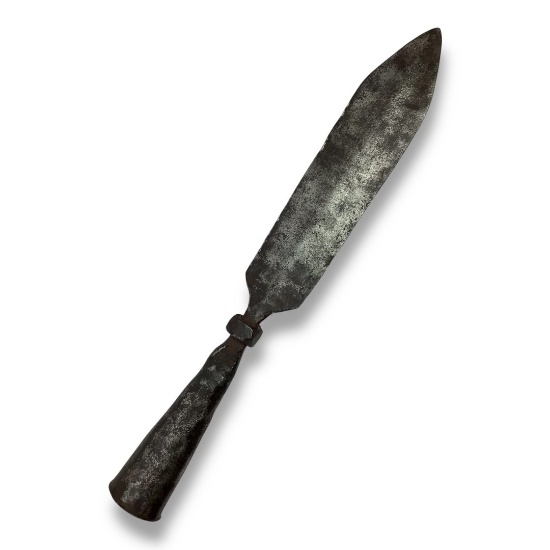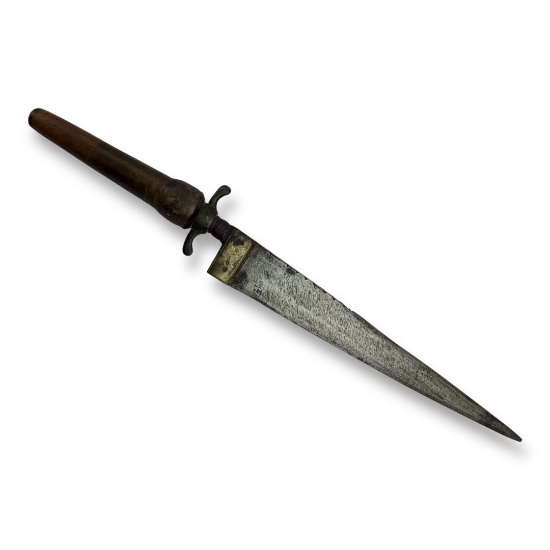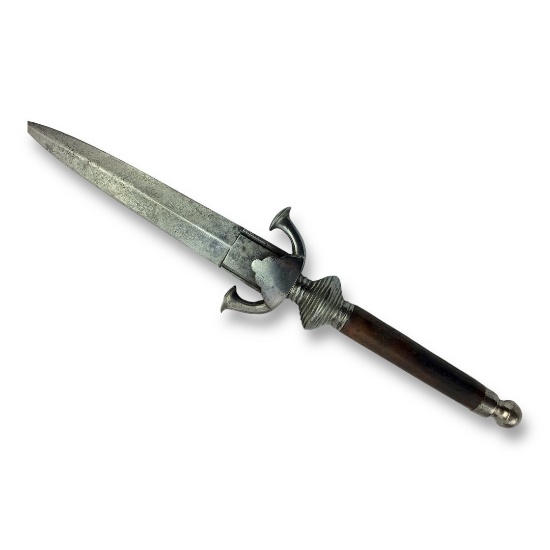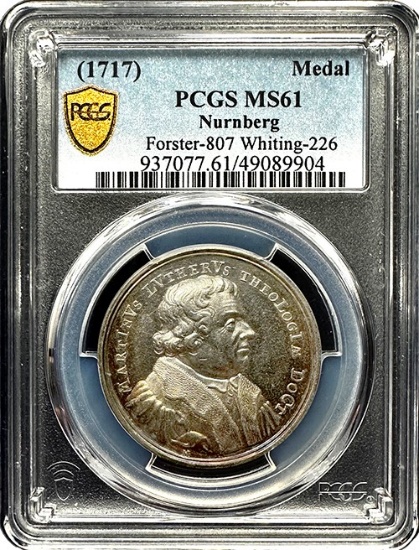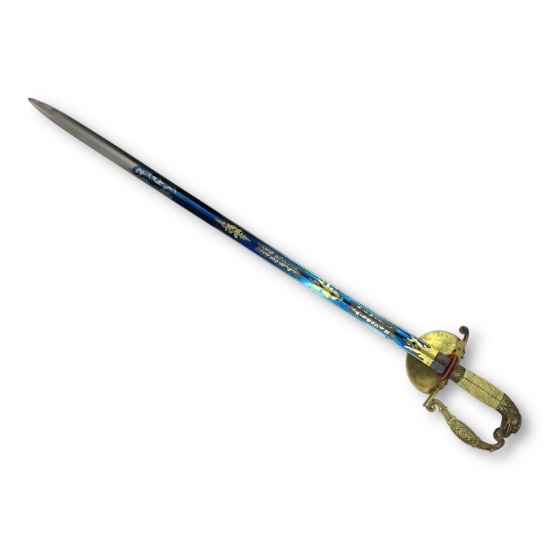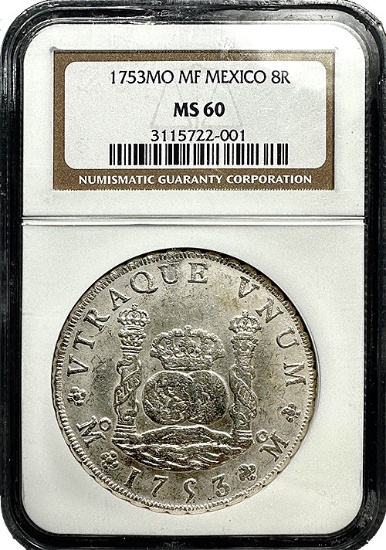
Militaria - Arms & Armor Through the Ages
Militaria - Arms & Armor Through the Ages
See Special Terms for additional fees
Description
Greek Flintlock Pistol Silver Plus w/ Niello Decorations - Late 17th to early 19th Century
Lot # 321 (Sale Order: 76 of 273)
Niello—a black metallic alloy fused into engraved silver—was a signature decorative technique in Ottoman-era Greek and Balkan firearms, often used to signify prestige, wealth, or tribal affiliation. These pistols were typically carried by Greek fighters, known as klephts or armatoloi, during the centuries of Ottoman occupation and into the early period of Greek independence movements.
Whether intended for ceremonial wear or as a sidearm of status, this pistol is a textbook example of regional craftsmanship, with beautifully preserved ornamentation and traditional construction. A fantastic collector-grade piece representing the cross-cultural artistry of southeastern Europe during a time of rebellion, empire, and transition.
Provenance: From a high-end German Arms & Armor Collection.
Dimensions: Approx. 14" in Length
Napoleonic Era Russian or Hungarian Officer's Sword with Brass Mounts
Lot # 350 (Sale Order: 77 of 273)
The sword remains complete with its scabbard and fittings intact, exhibiting signs of period use but retaining strong structural integrity.
During the Napoleonic Wars, regional officer swords like this reflected both national styles and battlefield practicality. Russian and Hungarian officers often carried swords with regional embellishments and durable materials suitable for cavalry and infantry command.
English Napoleonic Era Naval Dagger - Lion Head Pommel, Gladius Design
Lot # 351 (Sale Order: 78 of 273)
Massive 18th Century French Cuttoe Hunting Sword - Blued & Gilt Blade, Unusual Iron Hilt
Lot # 352 (Sale Order: 79 of 273)
English Officer's Small Sword - Napoleonic Era or Earlier, Possibly Rehilted 17th Century Blade
Lot # 353 (Sale Order: 80 of 273)
The hilt exhibits the simple, elegant form of late Georgian officer swords, potentially updated from an older fighting blade to meet contemporary uniform standards. A refined and historically complex piece.
During the Napoleonic Wars, many British officers carried swords that were privately purchased and customized, often incorporating heirloom blades or continental parts. The small sword was a symbol of both rank and personal combat readiness, though by this period it had become largely ceremonial in nature. The potential reuse of a 17th-century blade suggests a strong family or regimental tradition, adding to the sword's mystique and narrative potential.
French Naval Administration Dirk - Model 1860, 3rd Empire Era, Ebony Grip, Original Scabbard
Lot # 354 (Sale Order: 81 of 273)
The original leather and brass scabbard is included, though it is separating at the midpoint, with age-appropriate wear to the fittings and surface. This model was issued to naval officials, administrators, and junior officers during France's expanding global maritime reach in the mid-19th century.
While not intended for battlefield use, dirks like these were symbols of rank and responsibility aboard ships and in naval offices. Under Napoleon III, France modernized its navy and deployed it extensively in Africa, Asia, and the Americas. This dirk is a fine example of the ceremonial elegance and pride associated with military service in that era.
French Model 1833 Naval Boarding Cutlass - Dated 1841, Chatellerault Manufacture with Anchor Stamps
Lot # 355 (Sale Order: 82 of 273)
American Revolutionary Period Masonic Dagger - Skull & Crossbones Hilt with Sheath
Lot # 400 (Sale Order: 83 of 273)
Rare Spanish Colonial Sword - Circa 1680, "EnToledo Spain"Â Blade Inscription, Wood Grip, Guarded H
Lot # 401 (Sale Order: 84 of 273)
Swords like this were widely used in Spanish colonies throughout the Americas during the late 17th century, when Toledo, Spain, was one of the foremost centers of European blade manufacturing.
These functional, utilitarian sidearms were likely carried by colonial militia, frontier guards, or naval crews in New Spain and other territories. Their straightforward construction and durable materials speak to the brutal practicality required on the colonial frontier. Surviving examples are scarce, especially with original Toledo markings.
Though the surface shows wear consistent with its age, the piece retains exceptional form and integrity. It has been professionally cleaned and oiled for preservation, with no active corrosion.
American Revolutionary War-Era Spanish Plug Bayonet Dagger - Rare
Lot # 402 (Sale Order: 85 of 273)
Plug bayonets were designed to fit directly into the muzzle of a musket, converting it into a spear-like weapon for close-quarters combat?a design that was phased out by the early 19th century due to safety concerns.
Spain's involvement in the American Revolutionary War is often overlooked but was pivotal. After joining the conflict in 1779 as an ally of France, Spain launched significant military campaigns against British forces, particularly in the Gulf Coast and Mississippi River regions. This bayonet likely belonged to a Spanish soldier involved in these efforts, such as those under General Bernardo de GÂ lvez, who led successful campaigns that weakened British control in the South. As such, this weapon not only represents a fading form of military technology but also highlights Spain's crucial yet underappreciated role in securing American independence.
American Revolutionary War Dog Head Silver Hilt Sword - Hallmarked 1770
Lot # 403 (Sale Order: 86 of 273)
Early American Guardless Bowie Knife - Maker Marked
Lot # 404 (Sale Order: 87 of 273)
U.S. Revolutionary War Heavy Cavalry Sabre - Quill Tip, Bone & Brass Hilt, Museum Provenance
Lot # 405 (Sale Order: 88 of 273)
British Revolutionary War Sword - Boutroy of London, Engraved Blade, Brass Clamshell Guard
Lot # 406 (Sale Order: 89 of 273)
The sword includes a classic brass clamshell guard, pommel, and grip fittings, measuring approximately 36.5" in overall length. The piece is complete, well-balanced, and displays an elegant martial presence typical of late 18th-century British sidearms.
These swords were carried by British officers during the Revolutionary War, particularly those of elite regiments stationed in North America. The maker, Boutroy, operated from London's prestigious Sackville Street and was known for producing high-quality officer's blades. The clamshell guard is a traditional feature of mid-to-late 18th-century British officer swords, often seen during campaigns from Bunker Hill to Yorktown. Its craftsmanship and maker's provenance add to its desirability as a collector's item.
American Revolutionary War Hunting Sword (Cuttoe) - Circa 1760, Referenced in Neumann's Work
Lot # 407 (Sale Order: 90 of 273)
The style and form of this piece are directly referenced in George C. Neumann's "Swords & Blades of the American Revolution," p. 97, #106S, confirming its authenticity and period use.
Hunting swords were favored sidearms for colonial officers and militiamen, offering a compact and easily carried blade with both martial and utilitarian value. Often made or assembled domestically using imported European blades, these swords were used for close-quarter combat, ceremonial display, and daily survival in the field. By the time of the Revolution, the hunting sword had become a symbol of colonial resistance, wielded by men fighting not with formal military issue, but with whatever they had at hand. This example speaks directly to that improvisational spirit and the birth of the American identity in arms.
American Revolutionary War-Era French Hunting Sword by Pichon, Silver Hilt - 1750-1760
Lot # 408 (Sale Order: 91 of 273)
War of 1812 American Eaglehead Officer's Sword - L. Wells & Co. New York, Ornate Blade Design
Lot # 409 (Sale Order: 92 of 273)
It is marked on the reverse near the ricasso with the rare New York dealer's stamp: "L. Wells & Co." Though the scabbard is missing and a small portion of the hilt is damaged, the sword remains structurally sound and collectible.
This type of sword was typical for U.S. officers during the War of 1812, particularly artillery and militia officers. The Eagle Head pommel and the decorative 5-ball knucklebow signify an American patriotic style that was evolving in opposition to European forms. According to Richard Bezdek's "American Swords and Sword Makers" (p. 317), L. Wells & Co. was active between 1799?1807. This specific dealer mark makes it an especially valuable research and display piece, tying it directly to early American commercial arms trade.
Rare American Revolutionary War Spontoon - U.S.Made Polearm, Circa Late 18th Century
Lot # 410 (Sale Order: 93 of 273)
Pre-Revolutionary War American Plug Bayonet - Designed for Pistol Use, Rare 18th-Century Weapon
Lot # 411 (Sale Order: 94 of 273)
Revolutionary War-Era Plug Bayonet - English or Colonial American, Circa Mid-to-Late 18th Century
Lot # 412 (Sale Order: 95 of 273)
American Revolutionary Era Large French Plug Bayonet / Fighting Dagger with Reversible Ebony Grip &
Lot # 413 (Sale Order: 96 of 273)
War of 1812 U.S. Cavalry Saber - Ivory Hilt, Imported Blade, Brass Sheath
Lot # 414 (Sale Order: 97 of 273)
American Militia Infantry Officer's Sword - Eagle Head Pommel, ca. 1835-1845
Lot # 415 (Sale Order: 98 of 273)
Confederate Civil War Side Knife - "MACON ARSENAL" Marked with Rosette Emblem (14" Blade)
Lot # 416 (Sale Order: 99 of 273)
Antique Late 1800's American handcuffs - Tower Bean's Pattern
Lot # 417 (Sale Order: 100 of 273)


 x Cancel
x Cancel